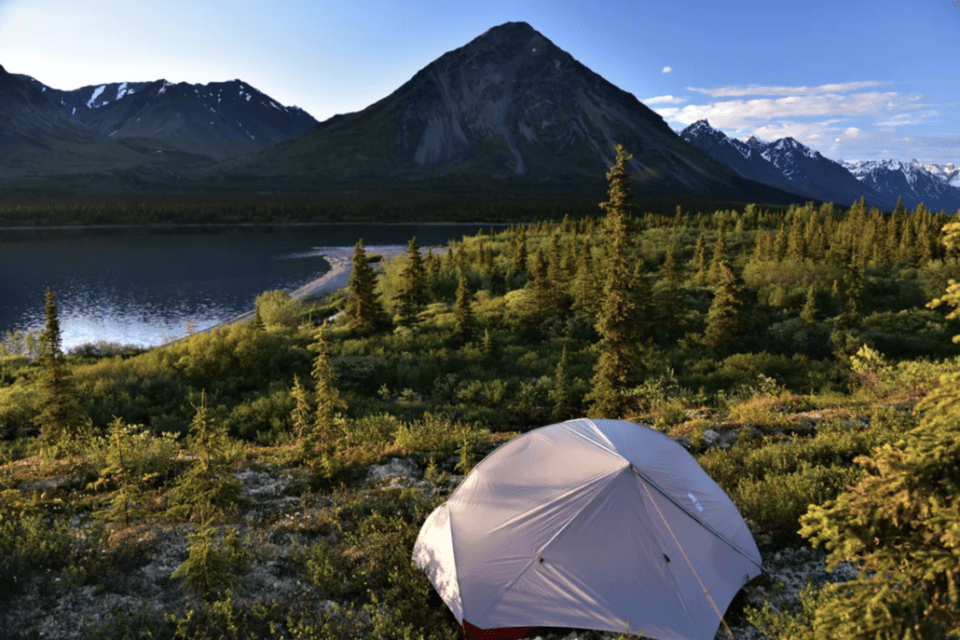For thirty years, Dick Proenneke lived alone in the Alaskan wilderness. He lived in a cabin he built with his own hands. He had no running water and no electricity. No phone to call for help. No neighbors to check on him. He procured most of his food from the land and the animals that strode on it. Proenneke hunted, he hiked, he became an expert wilderness photographer, and, most of all, he wrote. He did all of this on the backend of his life, from about ages 50 to 80.
A kind of retirement except: This period was clearly the man’s zenith. The full flowering of a dude who was born to observe the world and write about it, to insert himself in nature and become part of it, to visualize a way of being and actually realize it.
As he wrote in one of the over 100 pounds of notebooks he filled while living in his cabin about that first year there:
“What was I capable of that I didn’t know yet? What about my limits? Could I truly enjoy my own company for an entire year? Was I equal to everything this wild land could throw at me? I had seen its moods in late spring, summer, and early fall, but what about winter? Would I love the isolation then, with its bone-stabbing cold, its brooding ghostly silence, its forced confinement? At age fifty-one I intended to find out.”
He did. And what he found was he would thrive.
Proenneke was not born with a coonskin cap on his head, or an axe in his hand. He was born in 1916 in small-town Iowa and grew up there, leaving to join the Navy after the attack on Pearl Harbor. The son of a carpenter, he too had skills with the hammer, so the Navy put him to work rebuilding their destroyed base. After a time he was stationed briefly in San Francisco awaiting his next assignment. While there he caught rheumatoid fever and was deeply sickened. While he recuperated at a Naval hospital the war ended and he was discharged.
The illness made Proenneke feel weak and powerless, two things he wasn’t accustomed to and which motivated him to be as strong and self-reliant as possible. He also knew he didn’t want to spend any more time inside than he absolutely had to.
As it has for so many wanderers in the Northern Hemisphere, the north called to him. Wild, rugged, and empty. Maybe I’ll raise cattle, he thought, while traveling to Oregon. Instead, he enrolled in a diesel mechanics course in Portland, figuring he’d always be set for a job and might make enough money to quit working altogether far earlier than most.
He also kept moving north, eventually getting work on an Alaskan Navy base. A freak eye injury on the job nearly cost him his vision; this was his second medically issued wake up call. I’ll be damned if the last thing I see is a grease-splattered bulldozer I’m working on, he thought. He decided then it was time to find an escape hatch.
Proenneke found ii on the shores of Twin Lakes, Alaska, now part of Lake Clark National Park and Preserve. In 1968, he moved there full-time. He first stayed in an existing cabin owned by a Navy buddy. But he quickly set about building his own. He designed a 12′ x 6′ building of saddle-notched spruce logs he cut and peeled by hand. The roof was spruce limbs covered with sod and moss. He built a hearth and chimney with stones he collected from the lakeshore. Gravel flooring came from a nearby stream. The structure was well thought out, and designed to last. You can visit it today should you find yourself wandering Lake Clark NP.
If you do, you’d see what drew Proenneke to that place. What gave him life. What kept him there, for the next 30 years, save the occasional trip in his Piper Cub back to Iowa to see family. Proenneke left his cabin in 1999, and spent the last few years of his life living with a brother in California. He passed away in 2003.
While in Alaska he was free to let his body and mind wander and self-sufficient enough for it to be an adventure every single day, but not of the existential life-threatening kind. Clear-eyed and skilled, he simply saw a beautiful place to live and thought: this is the place. I’ll make my stand here.
“I looked around at the wind-blasted peaks and the swirls of mist moving past them,” he wrote. “It was hard to take my eyes away. I had been up on some of them, and I would be up there again. There was something different to see each time, and something different from each one. All those streamlets to explore and all those tracks to follow through the glare of the high basins and over the saddles. Where did they lead? What was beyond? What stories were written in the snow?”
I wondered if at that moment there was anyone in the world as free and happy.”
Probably not, Dick. Probably not.

